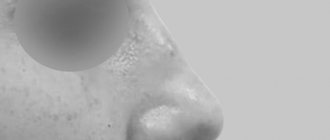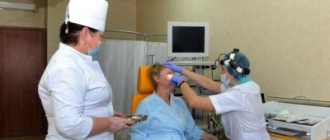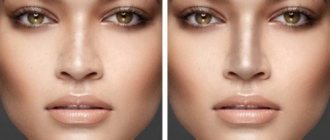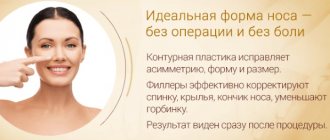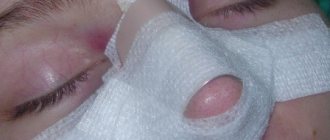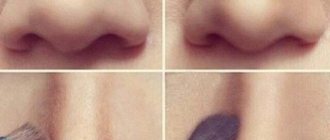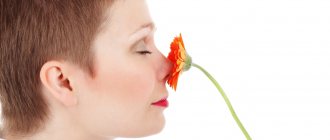Consultation with plastic surgeons with over 20 years of experience – free! Sign up by phone. Waiting for you! Plastic surgery always strives for constant renewal and improvement. Today, more and more techniques and operations are appearing that are designed to achieve the best results with minimal “sacrifices.” These include plastic surgery of the tip of the nose.
, which, if certain requirements are met, allows you to achieve a good aesthetic effect. Let us consider the features and differences of this operation from rhinoplasty in full.
What is nasal tip rhinoplasty?
Rhinoplasty of the tip of the nose is a surgical method for correcting this area and is the most popular rhinoplasty operation.
There are several common factors that can create a rounded nose tip (or potato nose).
- Patients with thicker skin on the nose often experience a more rounded tip. In this case, you can remove excess tissue.
- The second reason is the cartilage itself. The lower and lateral cartilages may be too wide or convex.
The operation will correct the tip of the nose:
- rounded - will reduce;
- lowered - will raise;
- crooked - straightens;
- wide - narrows.
The drooping tip is corrected by removing the cartilage tissue.
But plastic surgeons also perform other types of correction. This includes eliminating asymmetry and sagging of the columella (the skin septum separating the nasal passages), etc.
This kind of plastic surgery is among the most difficult. The complexity of surgical intervention is caused by the peculiarities of each manipulation. After all, the structure and shape of cartilage tissue in a particular patient is unique.
After an unsuccessful operation, the patient risks getting a distorted and deformed tip or the entire nose. Therefore, you should trust an experienced surgeon: he will definitely plan the operation on an individual basis.
To do this, you need to study the best rhinoplasty specialists in Moscow or another city.
What anesthesia is used?
The topic of anesthesia during plastic surgery is of great concern to patients. I would divide the audience into two camps: those who are against general anesthesia and try to avoid it by any means, and those who strive to survive the intervention in a state of oblivion and are happy to plunge into a medicated sleep.
Note!
- if we perform an operation in combination with complex rhinoplasty, then general anesthesia will be mandatory
- if we are correcting only cartilage, then we can use intravenous sedation with local anesthesia
Who is not suitable for rhinoplasty?
Clients of plastic surgeons who have certain contraindications will not be able to go to the clinic to have their nasal tip transformed.
CONTRAINDICATIONS
- oncological diseases;
- signs of infections;
- presence of diabetes mellitus;
- acute and chronic diseases;
- autoimmune disorders;
- insufficient blood clotting;
- inflammation in the nasal space.
For pregnant women, manipulation is indicated after the successful birth of newborns.
Contraindications
Nose reduction surgery should be carried out after an examination to identify contraindications that may complicate the operation or affect the final result of rhinoplasty.
Nose reduction surgery has the following contraindications:
- age less than 18 years, since the shape and structure of the nose is still developing before the age of 18;
- atherosclerosis;
- diabetes;
- viral diseases (HIV, hepatitis C, acute herpes);
- inflammation of the skin of the nose;
- infectious diseases in acute forms;
- mentally ill patient;
- diseases associated with poor blood clotting and heart problems;
- inflammation of the nasal and frontal sinuses;
- diseases of the oral mucosa.
Surgeries to change the shape or size of the nose are performed using two methods: closed or open. Which one will be chosen depends on the type of operation and the tasks assigned.
Correction methods
Today, medical and cosmetology clinics more often use the modeling method using computer equipment. Therefore, even before the operation, the patient sees in the photo a face with a new tip.
The plastic procedure to transform the configuration of the nose is carried out in 2 ways - open or closed.
In open rhinoplasty, the doctor first makes an incision in the area of the bridge and subsequently releases the pterygoid cartilage with further removal of excess tissue.
Finally, stitches are applied. If you need to raise or strengthen the tip, use post cartilage.
The doctor, using such technology, controls the operating process. This helps the surgeon avoid possible mistakes and miscalculations.
In a closed procedure, the doctor cuts the nasal mucosa, releases the alar cartilage and applies sutures to create the desired shape. But this method does not give scope to the doctor’s actions, as is the case with the use of an open procedure, since the plastic doctor is limited in the use of technology.
In this case, it is difficult for the surgeon to trace possible damage to the blood vessels. Because of which the patient risks getting hematomas and prolonging rehabilitation.
Closed rhinoplasty leaves a tiny 4-5 mm seam at the threshold of the nose.
The doctor decides which method of procedure to resort to. In order not to run into trouble, it is better to go to the best rhinoplasty surgeons in St. Petersburg, Yekaterinburg and other cities.
Carrying out the operation
The surgeon performs correction of the apex of the nose for the patient using a general or month.
The duration of the procedure does not exceed 1-2 hours (in rare cases 3).
During the operating period, the surgeon invades the soft and cartilaginous tissues, the columella. The procedure is performed taking into account the anatomical characteristics of the client.
The structure, strength, shape, thickness of the cartilage tissue of his nose, and other qualitative differences are taken into account.
The doctor peels off the soft tissue from the bone structures and nasal space in order to gradually carry out the prescribed measures to change the design. At the same time, the surgeon adheres to the rule “Do no harm!” so that the patient’s appearance is not damaged.
Due to excessive cutting of cartilage and other tissues supporting the apex, loss of the supporting functions of the nose is possible. And this leads to warping and disruption of the natural appearance.
But even if the nose has not lost its individuality after surgery, accompanied by excessive tissue cutting, the patient runs the risk of unsatisfactory healing. Therefore, the surgeon’s goal is not to disrupt the supporting properties of the nose.
In reality, tip-only rhinoplasty is rarely necessary.
Correction of one area of the nasal anatomy may affect other areas.
It is recommended to watch an interesting video about the correction of this part of the body:
Types of procedure
Using plastic manipulation, it is permissible to make the following adjustments:
- Reduction of the nasal tip is achieved by reducing the supporting structures. Correction is carried out by measures: shortening the lateral crura, dissecting the lateral and median crura of the cartilages, gunning the notches, cutting or softening the median crura of the cartilages. The technique of reducing the nasal apex ends with stretching the external passages. To prevent this from happening, the surgeon performs a resection of the alar shaft to narrow the nostrils.
- Enlargement (lengthening) of the nasal tip is associated with the concept of “ideal projection”. It is determined by the location of the tip above the back line, which gives a piquant snubness. To achieve this result, it will be necessary to integrate the median crura with the lower lateral cartilages and narrow the flat domes of the alar tip cartilages. It happens that lengthening occurs with the use of a cartilage biograft, and it leads to the strength of the tip. It is also possible to use a tissue graft at the tip in the dome area.
- Reducing the width (narrowing) of the apex of the nose. Excessive width is formed by the volume of the cartilage of the sides of the nose, placement and outline. Such a defect is eliminated by connecting the legs of the lower lateral cartilages and regenerating the cartilage of biotransplants. The tip of the nose, which is reduced in width, appears pointed. According to reviews of those who have undergone this procedure, each of them received elegant changes on their faces.
- Repositioning of the tip is indicated in case of excessive downward/upward inclination. The defect is corrected by connecting the median crura of the lower lateral cartilages with their further fixation with a jumper in the selected position.
In order for the plastic surgery to be successful, you should trust the experience and skill of the surgeon.
Recommendations before surgery
Preparation for manipulation is important for both the doctor and the patient. The plastic surgeon thoroughly examines the client to assess his health and identify possible contraindications.
7 days before rhinoplasty, the client gives up smoking, alcohol, and medications that affect blood clotting. He also takes tests before the procedure:
- general – blood, urine;
- biochemical - blood;
- for hepatitis and HIV;
- for prothrombin;
- for antigen.
The results of fluoroscopy, computed tomography of the paranasal cavities, fluorography, and ECG will also be required.
If a plastic surgeon neglects any stage in the preparatory period for surgery, it is preferable to refuse services.
Anesthesia
Rhinoplasty of the nose is performed under both general and local anesthesia. Everything directly depends on how complex the degree of the operation is.
General anesthesia is possible through multicomponent endotracheal anesthesia or through the administration of intravenous injective fluid with potent sedatives.
Complications (possible) after rhinoplasty
Such an operation is distinguished by its complexity and exquisite finesse in the work of the surgeon. And the risk of the patient seeking revision rhinoplasty cannot be ruled out. Among the possible negative manifestations:
- divergence of the edges at the incision sites;
- deformation of cartilage tissue;
- infection and bleeding.
The occurrence of an unsatisfactory outcome of rhinoplasty of the tip of the nose is due to the fact that there was excessive removal of cartilage tissue. After which the tip either rises strongly upward, like a pig’s snout, or, conversely, falls.
Such incidents can only be corrected by repeated measures. New procedures are performed to restore the backup and underlying structures that support the tip of the nose.
But you can repeat the operation no more than 3 times.
Cartilage on both sides must be removed in exact proportions to avoid asymmetry.
Repeated rhinoplasty is possible no less than 4 months after the previous procedure.
Rehabilitation
The rehabilitation period after surgery to correct and reduce the size of the nose is divided into four stages. The first stage lasts the first week after rhinoplasty. This is the most difficult stage, since in the first days there is pain, you need to constantly take antibiotics to avoid infection.
Bandages, plaster casts and tampons in the nostrils prevent breathing through the nose. There is no opportunity to go to work or do housework. It is inconvenient to maintain personal hygiene. There are pronounced bruises, bruises and tissue swelling on the face.
The next stage lasts two weeks after the first stage of rehabilitation. At the beginning of this stage, the doctor removes the bandages and plaster, removes tampons, and removes some stitches. The nose is washed with a special solution to remove blood clots and mucus from the cavity.
This makes breathing much easier. The swelling of the tissues is significantly reduced, the bruises practically disappear, but the nose remains swollen and deformed. During the first two stages, it is advisable to sleep only on your back to avoid damaging your nose. It is forbidden to lift weights, bend over, eat hot food, or be in places with elevated temperatures.
The third stage lasts up to three months after surgery. The swelling of the nose becomes almost invisible, but it is not yet fully formed. Slightly swollen wings and the tip of the nose are observed.
The fourth stage lasts from three months after rhinoplasty to one year. The period of complete rehabilitation depends on the characteristics of the patient’s body and the amount of work done to reduce the nose. In about a year, the nose will be fully formed and the result of the operation will be visible.
Price
The price of an event held at the tip of the nose may vary in different areas of the Russian Federation. The cost also reflects the clinic’s place in the ranking.
And it is ensured by the combination of professionalism and experience of surgeons and the level of service in a medical institution.
Thus, in Moscow, the average price for rhinoplasty starts at 110 thousand rubles. However, the cost of a repeat procedure is higher.
You shouldn’t take risks if the clinic offers lower prices than competitors. Such an operation cannot be priced too cheaply.
Prices
The final cost of the operation is determined after drawing up a detailed plan for the procedure, assessing the amount of work, the complexity of the case and the pricing policy of the medical center.
Let's consider the average cost of the methods used and popular types of intervention:
- closed method - 150 thousand rubles;
- open method - up to 250 thousand rubles;
- correction of a round and wide tip of the nose - 160 thousand rubles;
- correction of a drooping tip of the nose - 175 - 220 thousand rubles;
- rhinoplasty of the bifurcated tip of the nose - 180 - 320 thousand rubles;
- rhinoplasty of an upturned nose - 230 - 280 thousand rubles.
Reviews
ANNA, NOVOSIBIRSK:
“I decided to undergo rhinoplasty, having a natural defect in the tip of the nose.
There was no confidence in a positive result. But, surprisingly, everything went smoothly, and after a month no defects were discovered.”
GALINA, MOSCOW:
“My parents rewarded me with a raised tip of my nose. And I dreamed of changing it. I looked at the before and after photos, found out the price and decided to go under the scalpel. I agreed to rhinoplasty, and now I’ve been happy with my appearance for 1.5 years. Moreover, no complications were observed after the operation.”
ZHANNA, St. Petersburg:
“Rhinoplasty reduced large nostrils. It came out a week later, and showed up at work two weeks later.
The swelling went away quickly after the operation. But I was able to see a new nose after 6 months. I am satisfied with the result and do not regret the money and time spent, which is noticeable in the before and after photos.”
TATYANA, KALUGA:
“At first I removed the hump, but after rhinoplasty the tip of the nose sank.
Because of this, I had to undergo a second operation to raise it. I was looking forward to the time for new plastic surgery. But I was warned about such consequences. And now the revision rhinoplasty is over, and the nose has become perfect.”
Indications
Patients resort to this operation for many reasons, which are divided into physiological (difficulty with breathing) and aesthetic (improving appearance).
Nose reduction surgery is performed for the following indications:
- disproportionately long nose;
- large nostrils;
- Aquiline nose;
- the tip of the nose is too thick or pointed;
- saddle nose shape;
- change in the shape of the nose due to injury or damage;
- inherited defects in the shape of the nose;
- low bridge of the nose;
- there is a bulge in front of the tip of the nose;
- asymmetry of the nasal septum;
- difficulty or almost impossible breathing through the nose, as a result of fused or deviated septums or another reason
Expert opinion
- Cosmetologist
- Surgeon
Anna Avaliani
practicing cosmetologist
I would like to note: in order to correct the tip of the nose, it is not necessary to undergo surgery. The fact is that today it is possible to eliminate defects through contouring. This is an injection technique for which fillers are used. This method can be used to fill in depressions, scars, etc. Of course, using this method you cannot radically change your nose, but in many cases it will help. The downside of the procedure is that the results are not long-lasting, since the filler dissolves after 6-12 months. Therefore, you will have to regularly go for the procedure.
Aisha Baron
plastic surgeon
Remember that after surgery you should not go to the sauna or stay in the cold or extreme heat for a long time.
Do not overload your body as it needs recovery. It is also advisable to protect yourself from stressful situations. Whether to resort to rhinoplasty is up to everyone to decide for themselves. To do this, it is worth comparing the advantages and disadvantages of the method. A thorough consultation with a surgeon will clarify the aspects of the operation.
They will help you decide on the right choice of photos and videos before and after the procedure. In fact, rhinoplasty improves the client’s appearance and justifies the cost.

